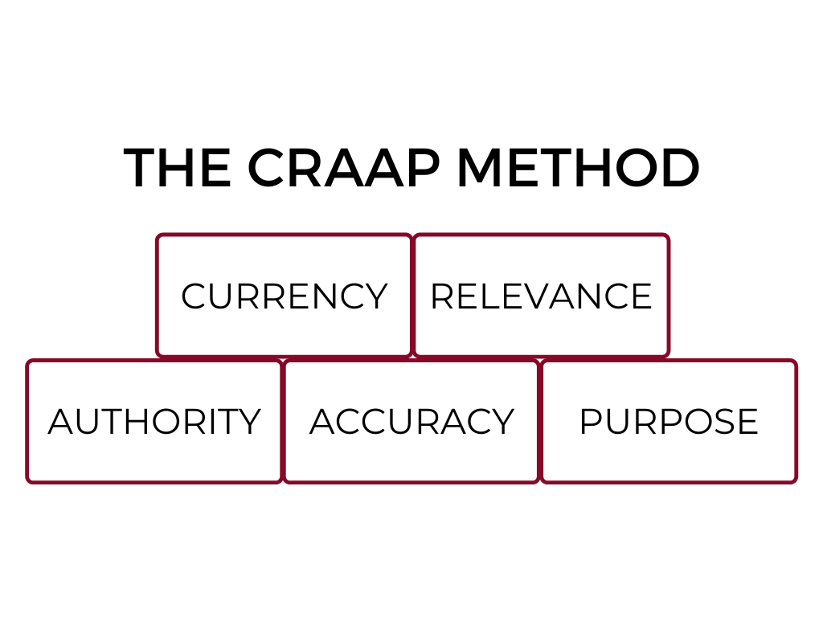53 Evaluating Sources
Once you have found sources that seem relevant to your research question, it’s time to evaluate them. Evaluation is a process for determining the value or quality of what you have found. There are many different aspects involved in evaluating information, including whether the information is factually accurate, is certified by a person of authority, is recent or current, and whether it is relevant to your project.
Let’s look at one approach to help us work through questions of evaluation, the CRAAP Method, which was developed by Librarian Sarah Blakeslee of the Meriam Library (University of California, Chico) in 2004. As a catchy acronym to help us evaluate information, the CRAAP Method stands for currency, relevancy, authority, accuracy, and purpose. Consider these definitions and questions when evaluating your sources:

Currency: the timeliness of the information.
- When was the information published or posted?
- Has the information been revised or updated?
- Does your topic require current information, or will older sources work as well?
- Are the links functional?
Relevance: the importance of the information for your needs.
- Does the information relate to your topic or answer your question?
- Who is the intended audience?
- Is the information at an appropriate level (i.e. not too elementary or advanced for your needs)?
- Have you looked at a variety of sources before determining this is one you will use?
- Would you be comfortable citing this source in your research paper?
Authority: the source of the information.
- Who is the author/publisher/source/sponsor?
- What are the author’s credentials or organizational affiliations?
- Is the author qualified to write on the topic?
- Is there contact information, such as a publisher or email address?
- Does the URL reveal anything about the author or source? Does the domain type tell us anything about the authority of the source (e.g. .com .edu .gov .org .net)?
Accuracy: The reliability, truthfulness and correctness of the content.
- Where does the information come from?
- Is the information supported by evidence?
- Has the information been reviewed or refereed?
- Can you verify any of the information in another source or from personal knowledge?
- Does the language or tone seem unbiased and free of emotion?
- Are there spelling, grammar or typographical errors?
Purpose: The reason the information exists.
- What is the purpose of the information? Is it to inform, teach, sell, entertain or persuade?
- Do the authors/sponsors make their intentions or purpose clear?
- Is the information fact, opinion or propaganda?
- Does the point of view appear objective and impartial?
- Are there political, ideological, cultural, religious, institutional or personal biases?
Remember that the CRAAP Method is just one tool for helping you think through information evaluation. The ultimate determination about whether an article, book, or web source is appropriate to your project is your audience, which might include your teacher, classmates, or a public audience of readers. You should always be asking yourself: will my audience be persuaded by the sources I have included?
Attribution
“Evaluating Information – Applying the CRAAP Test,” Merriam Library at California State University, CC-BY, https://library.csuchico.edu/sites/default/files/craap-test.pdf.
